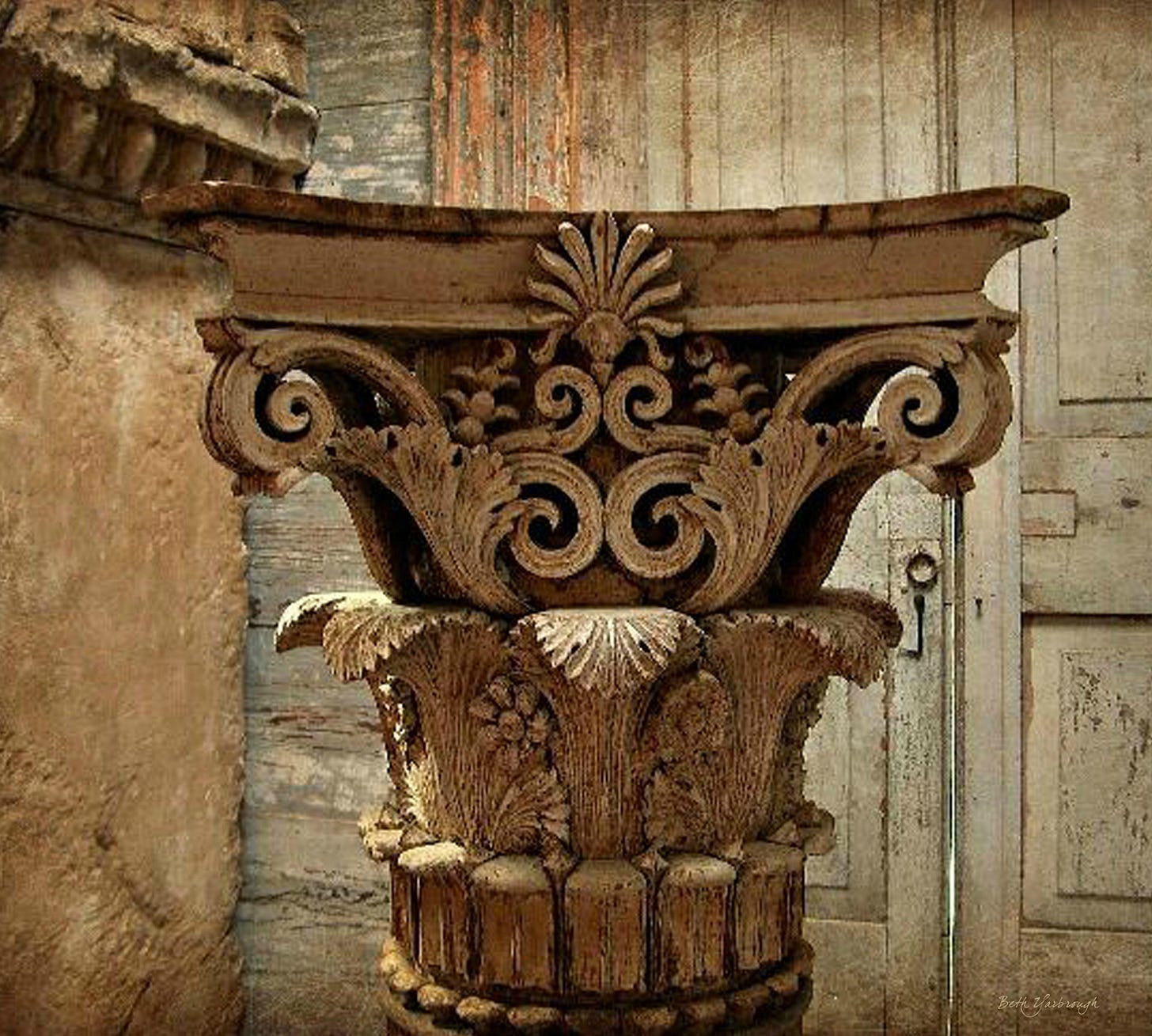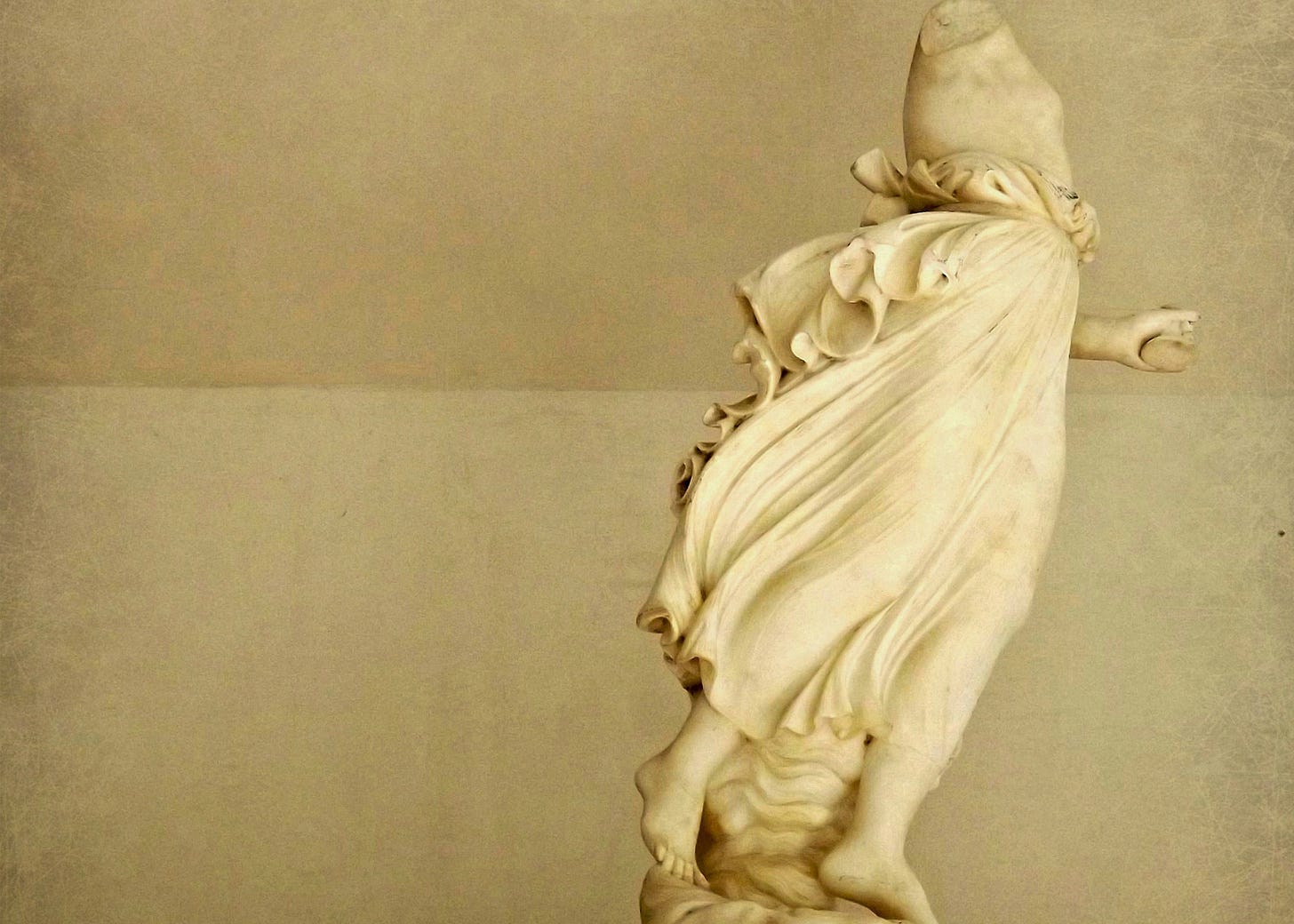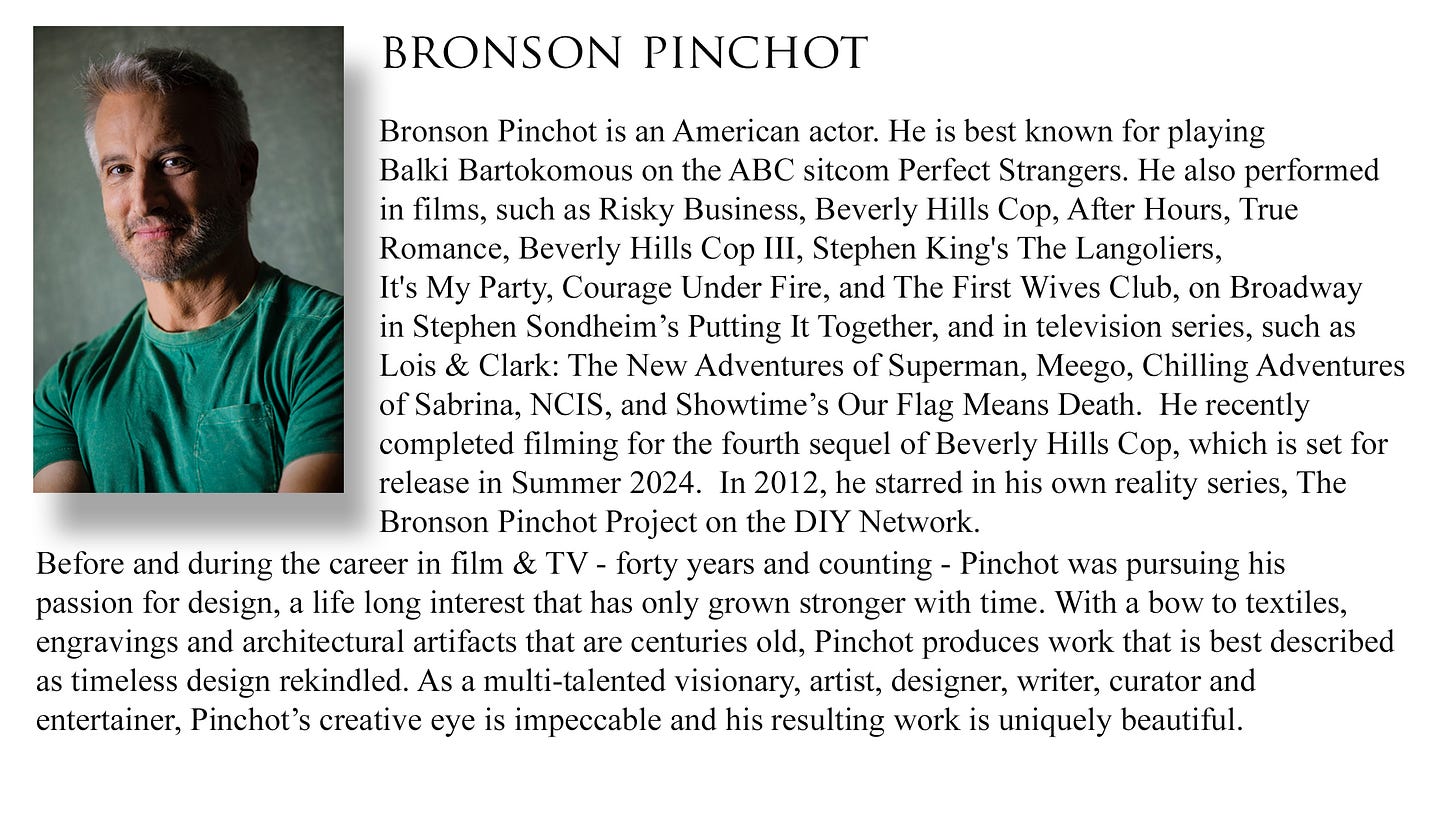In what turned out to be a bit of prophetic humor, I was introduced to my friend, Bronson Pinchot, by an old house. Many rightfully know Bronson for his acting career, which is now solidly in its fourth decade and still going strong. But an equally strong interest in design and classic architecture, coupled with considerable artistic talent, predates even that. This interest is what caused our paths to cross. And while a strong wind came along a few months later and literally blew that aforementioned old house down, the resulting friendship lasted. Eleven years and many other old-house joy rides later, the adventure continues.
Across those years, he has served as the inspiration for much of the journey that ultimately became known as Southern Voice. A significant portion of the architectural knowledge that I provide in my posts had its origin in a text or an email to Bronson, asking for guidance. Even though I am frequently stumped, he never is, and I have never known him to be wrong. Along the way, I have returned the favor as a sounding board, business partner, design collaborator, unofficial big sister, and chief sidekick.
Needless to say, conversation with Bronson is never dull. I have decided that if one could somehow pry open his skull, a party scene involving a giddy L. Frank Baum, Andrea Palladio, and William Shakespeare all dancing with The Seven Dwarves might emerge.
Leaving his skull alone, however, you may hopefully get a sense in this interview. Enjoy.
“Most old house enthusiasts can pinpoint a moment that began their love affair with architecture, old materials, etc. Do you recall such a moment, or was it there from the beginning?”
“I was 20, visiting Vermont. In the middle of the woods in a trench that had been dug there for the purpose sat a beautifully proportioned smallish-scale Greek temple, in soulfully crumbling off-white paint with wood showing through. I now know it must have dated to around 1830. It had columns around all four sides, quite unlike houses of that period. I was flabbergasted, dumbstruck, smitten for life. I wanted it, wanted to rescue it, craved it just as it was - majestic, humbled, and lost. It must’ve been a church, a meeting house or some such. I later came to learn that Greek Revival buildings in America were wooden replicas of ancient marble (or limestone) temples that were themselves replicas of earlier wooden temples.”
“And the memory is still fresh?”
“Forty-five years later I would walk to it - slowly - and over hot coals - if I could spirit it away to safety.”
“You mentioned Greek Revival. Are there certain periods of design that speak to you more than others?”
“The periods of design that speak to me the most eloquently are those in which the vision required known techniques to be stretched to the limits and beyond, thus creating new limits. Think of the color in “The Wizard of Oz.” Its richness has never been equaled. When it was shot in 1938 and early 1939 full length technicolor features were almost unheard of. True sixteenth century English Tudor buildings are fantastically clumpy and endearing because the Renaissance was late in coming to England so medieval-minded craftspeople were doing their best. True American folk art pre-1845 can snatch your breath away because the vision so far outstripped the artists’ abilities.”
“That folk art tradition has evolved. What about modern primitives?
“I’d rather suffer Mel Gibson’s fate at the end of “Braveheart”..in slow motion.”
“Some styles of architecture have come back into prominence more than once. Is there a difference?”
“Greek Revival architecture of circa 1825-35 is spectacular because interest in Greek architecture was new on this continent. The revival of circa 1910, known confusingly as Colonial Revival, no doubt because the correct alternative, “Greek Revival Revival” , sounds Seussian, is worse than canned string bean water. True American Colonial and Federal houses take your breath away. They want so badly to be refined. But the recreations we have had since the early twentieth century have less flavor than early diet sodas.”
“I’ll cautiously ask about modern architecture, then.”
“I can be happy in an early skyscraper, but anything post World War II is just a crate covered with Saran Wrap.”
“Honest efforts rendered early in the awareness of a style, then, hold the purest appeal.”
“A sense of reaching and stretching for an effect just out of reach is all I require. Is that asking so much?”
“Through the years, I have watched you in the process of creating rooms both indoors and out using architectural salvage and antique artifacts. You have a unique ability not only to transform a space but to transport it back into time, as if it has been there for centuries. This is a very recognizable design footprint of yours. Is that a conscious effort or do you realize it only after a project is complete?”
“I create rooms the same way I create performances. I start, obviously, with what’s available. In a script that’s the words. With a room or a garden it’s the space, the location, the supporting framing, the slope of the ground, the light, etc.
Next is to identify what cannot be altered and what can be altered. In the case of a room, house or garden, by the way, everything can be altered. It’s just a matter of patience and cost.
Following this, I start the parade of goodies. In the process of performing, this includes attitude, vocal timbre, the way the character might move. If designing, the question becomes what antique flooring, windows, wall sheathing, and freestanding goodies do I have or can I get access to?
The end objective in both cases is the same. How, at the end of the process can I leave something - or in the case of acting, a character - that appears to have occurred naturally without any input by me?
And whether acting or designing, I add, add, add, then subtract, subtract, subtract. Any eccentricities - how I love eccentricities - MUST seem to have appeared by absolute necessity.
“I can attest to that. As an artist myself, I am well acquainted with “process” and the value that it holds toward the end result. Even knowing that, however, there have been countless projects of yours that have seemed perfectly complete to my eye, only to watch them go through half a dozen more iterations before you pronounce them finished. And every single time, your instinct and your eye have held true. I cannot recall a single room or corner of a garden that ended up looking anything other than natural and effortless.”
“If everything appears to have “growed” there AND the room gives unforced pleasure on every viewing, then I’m done.”
It has been my observation over a lifetime that those who are blessed with the gift of creativity find more than one way to express it, often managing to reach critical acclaim in more than one arena. That is an apt description of my friend. In that regard, I can say with confidence that he will never be completely “done”, and for that we can all be grateful.
Top photo by Lem Lattimer. Middle photos by Beth Yarbrough. Bottom photo by Matt Stasi.








What a lovely interview! I laughed out loud at the Mel Gibson comment, but I agree. I too find my heart beats wildly when viewing Greek Revival or Early American homes and buildings. It can literally make me gasp to see an exquisitely restored home that has been carefully preserved and beautifully decorated with the homes architectural features in mind. If we get to choose our Heaven that will be mine, designing, decorating, and furnishing these kinds of homes. In the meantime I absolutely love walking through Williamsburg, Newport, Savannah, Beaufort, and all coastal cities from Georgia to Maine. I’m in Heaven when I’m there.
Can you bring him to Milton for a visit??? :D He was iconic in my teen years, and now iconic in a new way!